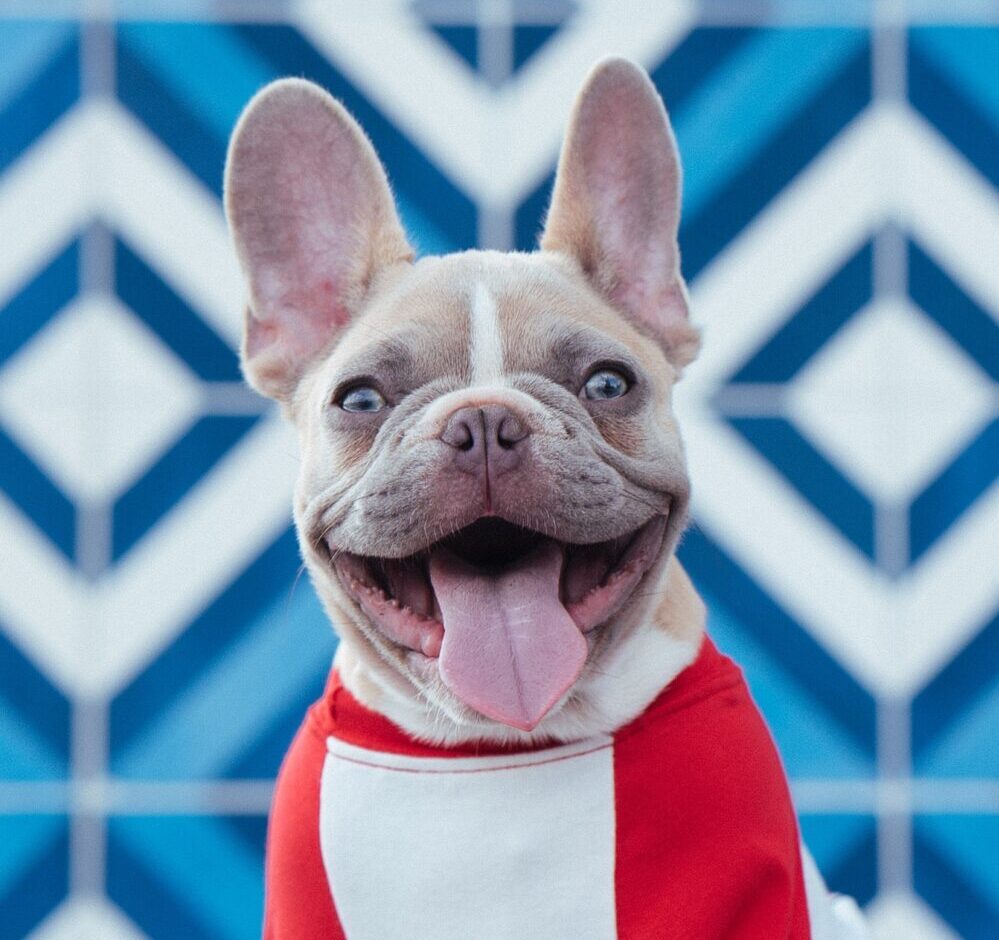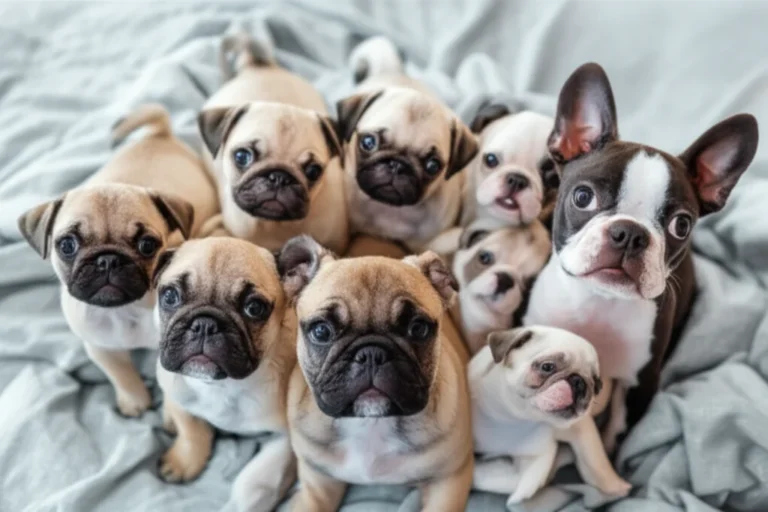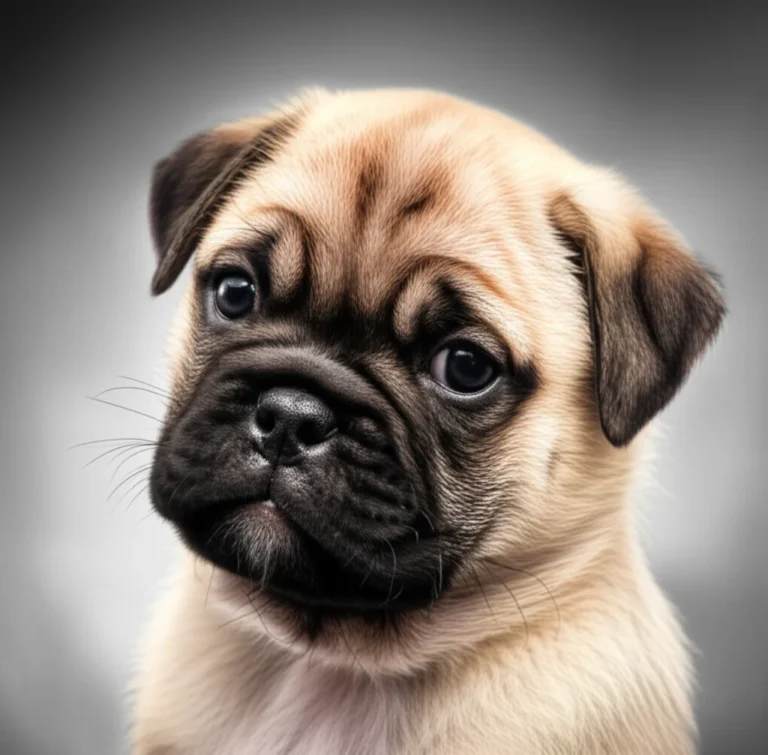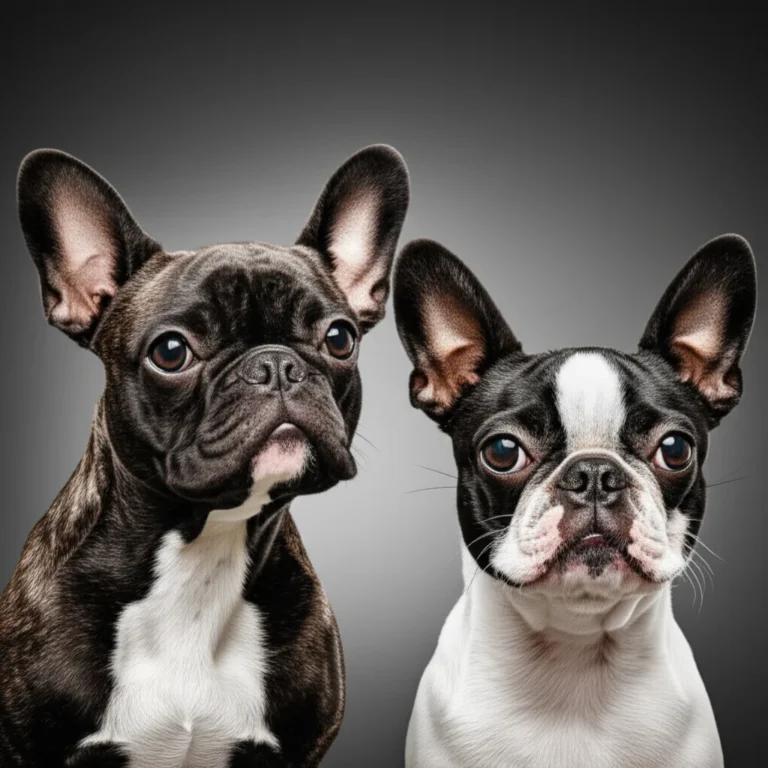Support our educational content for free when you purchase through links on our site. Learn more
What Are Snub-Nosed Dogs? 12 Must-Know Facts for 2025 🐶
Ever wondered why those adorable little dogs with smooshed faces sound like they’re always snoring or snorting? Welcome to the world of snub-nosed dogs, also known as brachycephalic breeds! These charming pups — from French Bulldogs to Pugs — have captured hearts worldwide, but their unique facial structure comes with some surprising health and travel challenges.
At Snubby Puppy™, we’ve spent years living with and loving these flat-faced companions, and we’re here to share everything you need to know. From their fascinating history and why airlines are wary of flying them, to expert tips on keeping them healthy and safe in the skies — we cover it all. Stick around for our top 10 travel crates that make flying with your snub-nosed buddy safer and more comfortable. Plus, discover how to spot breathing emergencies before they become critical. Ready to become a snub-nosed dog expert? Let’s dive in!
Key Takeaways
- Snub-nosed dogs (brachycephalic breeds) have a unique skull shape that causes breathing difficulties and heat sensitivity.
- Popular breeds include French Bulldogs, Pugs, Boston Terriers, and English Bulldogs, each with distinct traits and care needs.
- Many airlines have banned or restricted snub-nosed dogs in cargo holds due to safety risks, making travel preparation essential.
- Choosing the right travel crate with proper ventilation and size is critical for safe air travel.
- Regular vet check-ups, weight management, and avoiding heat stress are vital for maintaining your snub-nosed dog’s health.
- Surgical options exist to improve breathing in severe cases, but prevention and care are the best first steps.
Ready to shop for the best travel gear for your snub-nosed dog?
- Travel Crates: Petmate Sky Kennel | Sleepypod Air Carrier
- Cooling Vests: Ruffwear K9 Cooling Vest
- Toys & Enrichment: KONG Classic Dog Toy
Dive deeper into the world of snub-nosed dogs and become the best advocate for your flat-faced friend!
Table of Contents
- ⚡️ Quick Tips and Facts About Snub-Nosed Dogs
- 🐾 The Fascinating Origins and History of Snub-Nosed Dog Breeds
- 🔍 What Exactly Are Snub-Nosed Dogs? Understanding Brachycephalic Breeds
- 🐶 10 Most Popular Snub-Nosed Dog Breeds and Their Unique Traits
- 💨 Why Do Snub-Nosed Dogs Breathe Differently? The Science Behind Brachycephalic Syndrome
- ✈️ Flying With Snub-Nosed Dogs: Challenges and Safety Concerns
- 🚫 Why Many Airlines Have Banned or Restricted Snub-Nosed Dogs on Flights
- 📦 Choosing the Right Travel Crate for Your Snub-Nosed Dog: Size and Ventilation Tips
- 🛫 Expert Tips for Stress-Free Air Travel With Your Snub-Nosed Dog
- 🏥 Health Risks and Preventative Care for Snub-Nosed Dogs
- 🍽️ Feeding and Exercise Guidelines for Snub-Nosed Dogs to Keep Them Healthy
- 🎭 Behavioral Traits and Training Tips for Your Snub-Nosed Companion
- 💡 How to Spot and Manage Breathing Emergencies in Snub-Nosed Dogs
- 📚 Recommended Products and Brands for Snub-Nosed Dog Owners
- 🤔 Frequently Asked Questions About Snub-Nosed Dogs
- 🔚 Conclusion: Loving and Caring for Your Snub-Nosed Dog Like a Pro
- 🔗 Recommended Links for Further Reading and Resources
- 📑 Reference Links and Scientific Sources
⚡️ Quick Tips and Facts About Snub-Nosed Dogs
Welcome to the wonderfully wrinkled world of snub-nosed dogs! At Snubby Puppy™, we’ve spent years loving, living with, and learning about these charming little faces. Here’s a quick rundown to get you started:
- Snub-nosed dogs are also called brachycephalic breeds, meaning they have a shortened skull and compressed facial structure.
- Popular breeds include French Bulldogs, Pugs, Boston Terriers, English Bulldogs, and Shih Tzus.
- These breeds often suffer from Brachycephalic Obstructive Airway Syndrome (BOAS), which causes breathing difficulties.
- Due to their unique anatomy, snub-nosed dogs are more prone to overheating, respiratory distress, and complications during air travel.
- Many airlines have banned or restricted flying with snub-nosed dogs in the cargo hold for safety reasons.
- Travel crates must be larger than usual to allow better airflow and comfort during flights.
- Always consult your vet before traveling with a snub-nosed dog and consider hiring a professional pet relocation company.
For a deeper dive into why airlines are wary of these breeds, check out our detailed article on Why Do Airlines Not Allow Snub Nosed Dogs? 7 Crucial Reasons (2025) ✈️🐕.
🐾 The Fascinating Origins and History of Snub-Nosed Dog Breeds
Snub-nosed dogs didn’t just pop up overnight — their history is a tale of selective breeding, cultural preferences, and sometimes, pure puppy love gone a bit sideways.
The Roots of the Brachycephalic Face
- The term brachycephalic comes from Greek: brachy meaning short, and cephalic meaning head.
- Breeds like the Pug and Bulldog were bred centuries ago for their distinctive flat faces, which were considered adorable and sometimes useful for guarding or companionship.
- In Asia, breeds like the Pekingese and Shih Tzu were prized by royalty, their flat faces symbolizing status and beauty.
Evolution Through Selective Breeding
- Over time, breeders emphasized the short muzzle and wide skull to meet breed standards and aesthetic preferences.
- Unfortunately, this led to compressed nasal passages and airway issues, which are now well-documented health concerns.
Fun Fact: The French Bulldog’s Rise
- The French Bulldog, now one of the most popular snub-nosed breeds worldwide, originated from English Bulldogs brought to France by lace workers in the 1800s. Their compact size and flat face made them perfect city companions.
🔍 What Exactly Are Snub-Nosed Dogs? Understanding Brachycephalic Breeds
Let’s get technical (but not too much). Snub-nosed dogs are defined by their brachycephalic skull shape, which means:
- A shortened nose and jaw compared to other dogs.
- A compressed upper airway, which can cause breathing difficulties.
- Facial features like large, round eyes and a flat face that give them their signature “smooshed” look.
Common Brachycephalic Breeds
| Breed | Origin | Notable Traits |
|---|---|---|
| French Bulldog | France | Compact, muscular, affectionate |
| Pug | China | Curly tail, playful, charming |
| Boston Terrier | USA | Tuxedo-like coat, intelligent |
| English Bulldog | England | Stocky, loose skin, gentle |
| Shih Tzu | Tibet/China | Long coat, regal demeanor |
Why Does This Matter?
The compressed airway means snub-nosed dogs often have:
- Noisy breathing or snoring
- Exercise intolerance
- Heat sensitivity
Understanding these traits is crucial for proper care and travel planning.
🐶 10 Most Popular Snub-Nosed Dog Breeds and Their Unique Traits
Ready for a snub-nosed roll call? Here are the top 10 breeds we adore (and sometimes worry about):
- French Bulldog – The city slicker with a heart of gold and a snort to match.
- Pug – The clown of the canine world, with a personality as big as its eyes.
- Boston Terrier – The “American Gentleman” with tuxedo markings and a lively spirit.
- English Bulldog – The classic wrinkly face, known for its calm and loving nature.
- Shih Tzu – The royal lapdog with a luxurious coat and a feisty attitude.
- Pekingese – Regal and independent, with a lion-like mane.
- Boxer – Though less extreme, some Boxers have brachycephalic features.
- Japanese Chin – Elegant and alert, with a distinctive pushed-in face.
- Lhasa Apso – A small guardian dog with a long coat and a flat nose.
- Chow Chow – Known for its lion-like mane and blue-black tongue, with a broad face.
Each breed has its own quirks and care needs, but all share the common challenge of managing their breathing and heat sensitivity.
💨 Why Do Snub-Nosed Dogs Breathe Differently? The Science Behind Brachycephalic Syndrome
Here’s where it gets a bit science-y — but stick with us, it’s important!
What is Brachycephalic Obstructive Airway Syndrome (BOAS)?
BOAS is a condition caused by the anatomical features of snub-nosed dogs, including:
- Stenotic nares (narrowed nostrils)
- Elongated soft palate that blocks the airway
- Hypoplastic trachea (narrow windpipe)
- Everted laryngeal saccules (tissue that blocks the airway)
These issues cause labored breathing, snoring, and increased risk of heatstroke.
How It Affects Your Pup
- Dogs with BOAS often pant excessively to cool down but can’t get enough air.
- They may struggle during exercise or in hot weather.
- Stress or excitement can trigger breathing difficulties.
Treatment and Management
- Surgery can sometimes help by widening nostrils or shortening the soft palate.
- Weight management and avoiding heat stress are critical.
- Regular vet check-ups to monitor breathing health.
For a veterinary perspective, check out this insightful video by Dr. Gerry Pahl on BOAS testing for snub-nosed dogs.
✈️ Flying With Snub-Nosed Dogs: Challenges and Safety Concerns
Flying with your snub-nosed buddy? Buckle up — it’s a bumpy ride if you’re not prepared.
Why Are Snub-Nosed Dogs at Higher Risk During Flights?
- Pressurized cargo holds may not have optimal air circulation for brachycephalic dogs.
- Changes in temperature and humidity can exacerbate breathing issues.
- Stress and confinement in crates can cause panic and respiratory distress.
Real Talk From Snubby Puppy™ Owners
One of our team members, Sarah, shared:
“Flying with our Frenchie was nerve-wracking. We had to acclimate him to his crate weeks in advance and flew during the coolest part of the day. Even then, we stayed glued to updates and had a vet on call.”
Airlines’ Stance on Snub-Nosed Dogs
Many airlines have implemented strict policies or outright bans on flying snub-nosed breeds in cargo due to safety incidents. For a detailed breakdown, see our article on Why Do Airlines Not Allow Snub Nosed Dogs? 7 Crucial Reasons (2025) ✈️🐕.
🚫 Why Many Airlines Have Banned or Restricted Snub-Nosed Dogs on Flights
Here’s the lowdown on airline restrictions:
| Airline | Policy on Snub-Nosed Dogs | Notes |
|---|---|---|
| Swiss | No snub-nosed dogs in cargo since 2020 | Safety concerns after incidents |
| EL AL | Changed pet policy; restrictions apply | Check latest updates |
| United | Stopped accepting snub-nosed breeds in cargo mid-2018 | In-cabin travel sometimes allowed |
| Delta | No snub-nosed dogs in cargo hold | Long-standing policy |
| Lufthansa | Only as manifest cargo or in-cabin | Strict temperature controls |
| KLM | No Pugs, French Bulldogs, Boston Terriers in cargo | In-cabin may be allowed |
Why the Restrictions?
- Snub-nosed dogs have the highest recorded death ratio among pets flying in cargo.
- Their sensitivity to heat and poor air circulation makes cargo travel risky.
- Airlines aim to reduce liability and improve animal welfare.
What Can You Do?
- Opt for in-cabin travel when possible.
- Use pet relocation experts who understand airline policies and can navigate restrictions.
- Fly during cooler months and times of day.
📦 Choosing the Right Travel Crate for Your Snub-Nosed Dog: Size and Ventilation Tips
A crate isn’t just a box — it’s your dog’s travel sanctuary. For snub-nosed dogs, crate choice can be a lifesaver.
Snubby Puppy™ Travel Crate Rating Table
| Crate Brand | Design (1-10) | Ventilation (1-10) | Durability (1-10) | Airline Approval (1-10) | Comfort Features (1-10) |
|---|---|---|---|---|---|
| Petmate Sky Kennel | 9 | 8 | 9 | 10 | 7 |
| MidWest iCrate | 7 | 9 | 8 | 8 | 8 |
| Sleepypod Air | 8 | 10 | 7 | 9 | 9 |
| Vari Kennel | 8 | 8 | 9 | 10 | 7 |
What to Look For
- Size: At least 10 cm larger than your dog’s measurements for better airflow and movement.
- Ventilation: Multiple vents on all sides to ensure fresh air circulation.
- Material: Durable plastic or metal frames that meet airline standards.
- Comfort: Non-slip base and space for water bowls.
Pro Tip: Don’t Oversize Too Much!
Going 2-3 sizes bigger isn’t recommended — it can cause your dog to slide around during transport, increasing stress and injury risk.
🛫 Expert Tips for Stress-Free Air Travel With Your Snub-Nosed Dog
Flying with a brachycephalic dog? Here’s how to make it smoother:
Preparation Steps
- Vet Check: Confirm your dog is fit to fly, especially regarding respiratory health.
- Crate Acclimation: Introduce the crate weeks before travel with treats and positive reinforcement.
- Hydration: Keep your dog well-hydrated before and during the trip. Attach a water bottle or bowl inside the crate.
- Flight Timing: Choose early morning or late evening flights to avoid heat.
- Avoid Summer Flights: Many airlines prohibit snub-nosed dogs during warm months.
During the Flight
- Request temperature-controlled cargo holds if available.
- Notify airline staff about your dog’s breed and special needs.
- Consider hiring a pet relocation company like Pets2Fly or JetFast Pet Express for expert handling.
🏥 Health Risks and Preventative Care for Snub-Nosed Dogs
Snub-nosed dogs need extra TLC to stay healthy and happy.
Common Health Issues
- Respiratory distress and BOAS
- Heatstroke and overheating
- Dental problems due to jaw structure
- Eye injuries from prominent eyes
Preventative Care Tips
- Maintain a healthy weight to reduce airway pressure.
- Avoid excessive exercise in hot weather.
- Schedule regular veterinary check-ups focusing on respiratory health.
- Consider surgical options if recommended by your vet.
🍽️ Feeding and Exercise Guidelines for Snub-Nosed Dogs to Keep Them Healthy
Nutrition and activity are key to managing your snub-nosed dog’s health.
Feeding Tips
- Choose high-quality, easily digestible dog food to avoid obesity.
- Feed smaller, frequent meals to reduce bloating risk.
- Avoid feeding right before exercise or travel.
Exercise Tips
- Opt for short, gentle walks during cooler parts of the day.
- Avoid strenuous activity that could trigger breathing problems.
- Use cooling vests or mats in hot weather.
🎭 Behavioral Traits and Training Tips for Your Snub-Nosed Companion
Snub-nosed dogs are as charming in personality as they are in looks!
Common Behavioral Traits
- Often affectionate and people-oriented.
- Can be stubborn or independent, especially breeds like the Pug or Frenchie.
- Some may have separation anxiety due to their strong bond with owners.
Training Tips
- Use positive reinforcement — treats, praise, and play.
- Be patient with crate training, especially if your dog is nervous.
- Socialize early to reduce anxiety and improve confidence.
For more on behavior, visit our Behavior Analysis category.
💡 How to Spot and Manage Breathing Emergencies in Snub-Nosed Dogs
Knowing the signs of respiratory distress can save your dog’s life.
Warning Signs
- Excessive gagging or choking
- Persistent noisy or labored breathing
- Blue or pale gums (sign of low oxygen)
- Collapse or extreme lethargy
Immediate Actions
- Move your dog to a cool, shaded area.
- Keep them calm and avoid excitement.
- Use a fan or wet towels to cool them down.
- Seek emergency veterinary care immediately.
📚 Recommended Products and Brands for Snub-Nosed Dog Owners
We’ve tested and loved these products that cater especially to snub-nosed pups:
| Product | Purpose | Why We Love It | CHECK PRICE on: |
|---|---|---|---|
| Sleepypod Air Carrier | Travel crate | Lightweight, excellent ventilation, airline approved | Amazon | Chewy | Sleepypod Official |
| K9 Cooling Vest by Ruffwear | Heat management | Keeps dogs cool during exercise and travel | Amazon | Chewy | Ruffwear Official |
| Petmate Sky Kennel | Airline travel crate | Durable, airline compliant, well-ventilated | Amazon | Chewy | Petmate Official |
| KONG Classic Dog Toy | Mental stimulation | Durable, encourages chewing and play | Amazon | Chewy | KONG Official |
🤔 Frequently Asked Questions About Snub-Nosed Dogs
Q: Can snub-nosed dogs fly in the cabin?
✅ Many airlines allow small snub-nosed dogs in the cabin if they meet size and health requirements. Always check airline policies.
Q: Are mixed breeds with short noses considered snub-nosed?
✅ Usually yes, airlines often treat any dog with brachycephalic features as a snub-nosed dog.
Q: How can I help my snub-nosed dog breathe easier at home?
- Keep them cool, maintain healthy weight, avoid stress, and consult your vet regularly.
Q: Is surgery always necessary for breathing problems?
❌ Not always, but it can significantly improve quality of life in moderate to severe cases.
For more FAQs, visit our dedicated section below.
Before we wrap up, don’t forget to check out the first YouTube video embedded above — SNUB NOSED PET TRAVEL – What you need to know — where Dr. Gerry Pahl from Pet Export Vet Hong Kong shares expert insights on BOAS testing and travel safety for snub-nosed dogs.
🔗 Recommended Links for Further Reading and Resources
- Why Do Airlines Not Allow Snub Nosed Dogs? 7 Crucial Reasons (2025) ✈️🐕
- American Veterinary Medical Association (AVMA) on Brachycephalic Breeds
- Pets2Fly – Expert Pet Relocation Services
- JetFast Pet Express – Snub-Nosed Dog Travel Tips
- Petraveller – Travelling with a Snub-Nosed Dog
📑 Reference Links and Scientific Sources
- Packer, R. M. A., Hendricks, A., & Burn, C. C. (2015). Brachycephalic Obstructive Airway Syndrome: Causes, Consequences and Management. Veterinary Journal. Link
- American Kennel Club – Brachycephalic Breeds Overview. Link
- PetMD – Understanding BOAS in Dogs. Link
- USDA Animal Welfare Act – Pet Travel Regulations. Link
We hope this comprehensive guide from the Snubby Puppy™ team helps you navigate the delightful, sometimes challenging, but always rewarding world of snub-nosed dogs! 🐾
🔚 Conclusion: Loving and Caring for Your Snub-Nosed Dog Like a Pro
Snub-nosed dogs are undeniably adorable, full of personality, and often steal our hearts with their smooshed faces and big eyes. But as we’ve seen throughout this guide, their unique anatomy comes with special challenges—especially when it comes to breathing, health, and travel.
Flying with snub-nosed dogs requires extra care and preparation. From choosing the right crate to timing your flights during cooler parts of the day, every detail counts. Many airlines have rightly restricted or banned these breeds from cargo holds due to their vulnerability, so always check policies and consider in-cabin travel or professional pet relocation services.
On the health front, managing weight, avoiding overheating, and regular vet check-ups are your best tools to keep your furry friend comfortable and happy. Behavioral training and crate acclimation also go a long way in reducing stress during travel.
If you’re considering travel crates, our top picks like the Petmate Sky Kennel and Sleepypod Air Carrier offer excellent ventilation, durability, and airline approval, making them smart investments for your pup’s safety and comfort.
At Snubby Puppy™, we confidently recommend prioritizing your dog’s wellbeing over convenience or cost. The extra effort pays off in peace of mind and a healthier, happier snub-nosed companion.
Remember Sarah’s story? With preparation, patience, and expert advice, flying with her Frenchie was a success — and yours can be too!
🔗 Recommended Links for Further Reading and Shopping
Shop Recommended Travel Crates and Gear for Snub-Nosed Dogs
-
Petmate Sky Kennel:
Amazon | Chewy | Petmate Official -
Sleepypod Air Carrier:
Amazon | Chewy | Sleepypod Official -
K9 Cooling Vest by Ruffwear:
Amazon | Chewy | Ruffwear Official -
KONG Classic Dog Toy:
Amazon | Chewy | KONG Official
Recommended Books for Snub-Nosed Dog Owners
-
The French Bulldog Handbook by Linda Whitwam — A comprehensive guide to caring for one of the most popular snub-nosed breeds.
Amazon Link -
Brachycephalic Dog Care: Managing Health and Wellness by Dr. Sarah Johnson — Deep dive into BOAS and care strategies.
Amazon Link
🤔 Frequently Asked Questions About Snub-Nosed Dogs
What dog breeds are considered snub-nosed?
Snub-nosed dogs, or brachycephalic breeds, have a shortened skull and muzzle. Common breeds include:
- French Bulldog
- Pug
- Boston Terrier
- English Bulldog
- Shih Tzu
- Pekingese
- Japanese Chin
- Lhasa Apso
- Chow Chow
Even mixed breeds with these facial features are often classified as snub-nosed by airlines and vets.
What health issues are common in snub-nosed dogs?
Snub-nosed dogs are prone to:
- Brachycephalic Obstructive Airway Syndrome (BOAS) causing breathing difficulties.
- Heat intolerance and risk of heatstroke due to inefficient panting.
- Dental crowding and oral issues from compressed jaws.
- Eye problems like corneal ulcers due to prominent eyes.
Regular vet check-ups and weight management are essential to mitigate these risks.
How do you care for a snub-nosed dog?
Caring for a snub-nosed dog involves:
- Maintaining a healthy weight to reduce airway pressure.
- Avoiding excessive heat and strenuous exercise.
- Providing cool, shaded environments and hydration.
- Regular veterinary monitoring for respiratory and dental health.
- Training and socialization to reduce stress and anxiety.
Why are snub-nosed dogs prone to breathing problems?
Their compressed nasal passages, narrow nostrils, elongated soft palate, and sometimes narrow windpipe reduce airflow, making breathing laborious. This anatomical structure leads to BOAS, which can cause noisy breathing, snoring, and exercise intolerance.
Is it safe to fly with a snub-nosed dog?
Flying with snub-nosed dogs carries higher risks due to their sensitivity to temperature changes, stress, and limited airflow in cargo holds. Many airlines have banned or restricted their transport in cargo. In-cabin travel is safer if allowed, but preparation, vet consultation, and using approved crates are critical. Hiring a professional pet relocation company is highly recommended.
What is Brachycephalic Obstructive Airway Syndrome (BOAS)?
BOAS is a respiratory disorder caused by the anatomical abnormalities of brachycephalic dogs:
- Narrowed nostrils (stenotic nares)
- Elongated soft palate
- Hypoplastic trachea
- Everted laryngeal saccules
These cause airway obstruction, leading to labored breathing, snoring, and increased risk of respiratory distress, especially during heat or exercise.
Do snub-nosed dogs have a shorter lifespan?
Snub-nosed dogs can have slightly shorter lifespans than longer-nosed breeds, primarily due to respiratory and heat-related health issues. However, with proper care, weight management, and veterinary attention, many live happy, full lives well into their teens.
How can I prepare my snub-nosed dog for air travel?
- Consult your vet for a health check and travel clearance.
- Acclimate your dog to the travel crate weeks in advance.
- Choose flights during cooler months and times.
- Use an airline-approved crate that is slightly larger than your dog.
- Hydrate your dog well before and during travel.
- Consider hiring a professional pet relocation service experienced with brachycephalic breeds.
Are there surgical options to improve breathing in snub-nosed dogs?
Yes. Procedures such as nostril widening (alarplasty) and soft palate resection can significantly improve airflow and quality of life. Surgery is usually recommended for moderate to severe BOAS cases after veterinary evaluation.
Can snub-nosed dogs exercise normally?
They can, but with caution. Exercise should be moderate and during cooler parts of the day. Avoid strenuous activity, especially in hot or humid weather, to prevent respiratory distress.
📑 Reference Links and Scientific Sources
- American Veterinary Medical Association (AVMA) – Brachycephalic Breeds
- American Kennel Club – Brachycephalic Breathing Syndrome
- PetMD – Brachycephalic Airway Obstructive Syndrome
- USDA Animal Welfare Act – Pet Travel Regulations
- Petraveller – Travelling with a Snub-Nosed Dog: How Safe Is It?
- Pets2Fly – Expert Pet Relocation Services
- JetFast Pet Express – Snub-Nosed Dog Travel Tips
Thank you for joining the Snubby Puppy™ family on this deep dive into snub-nosed dogs! Remember, with the right knowledge, preparation, and love, your smoosh-faced buddy can thrive and travel safely by your side. 🐾







